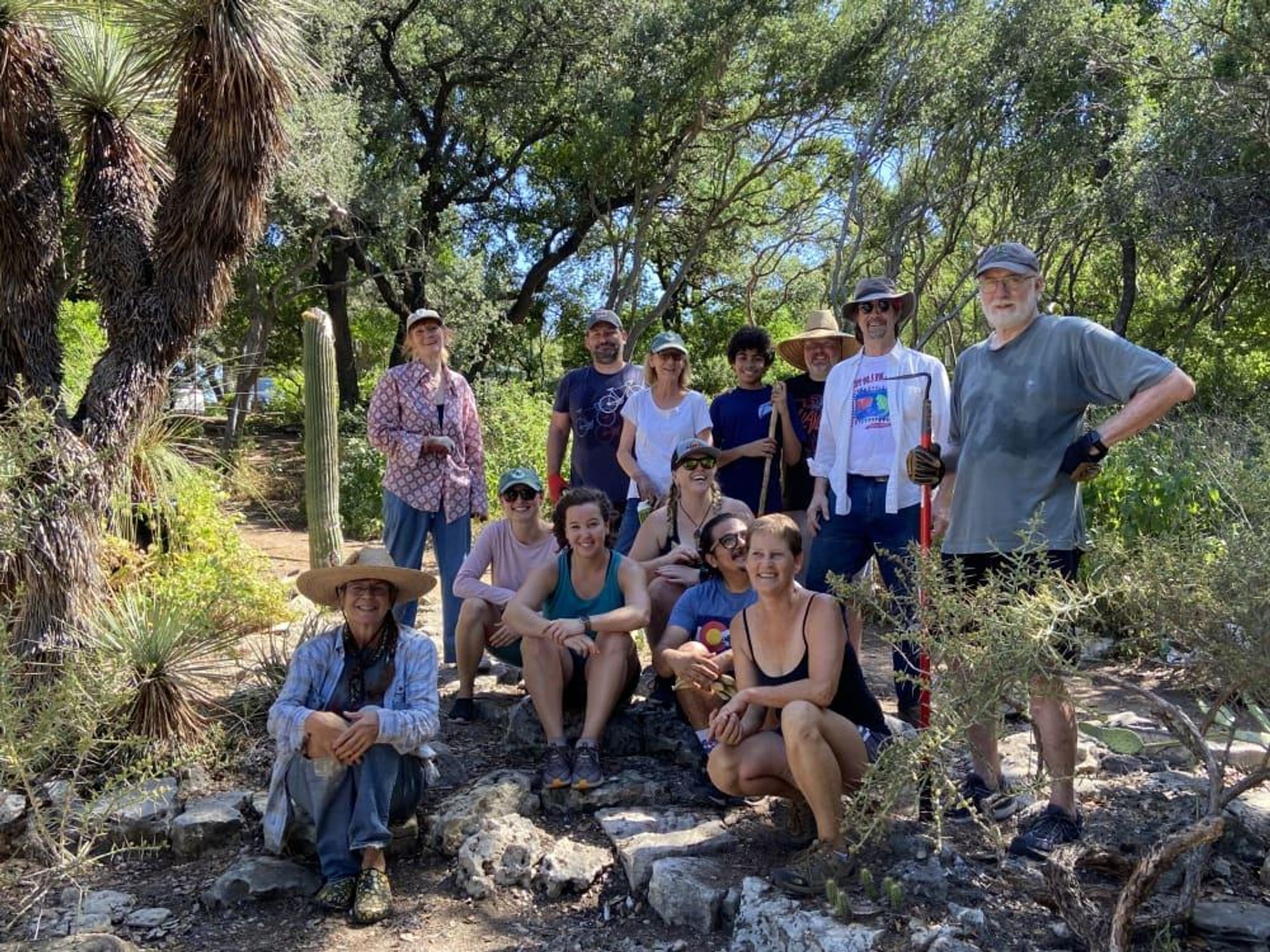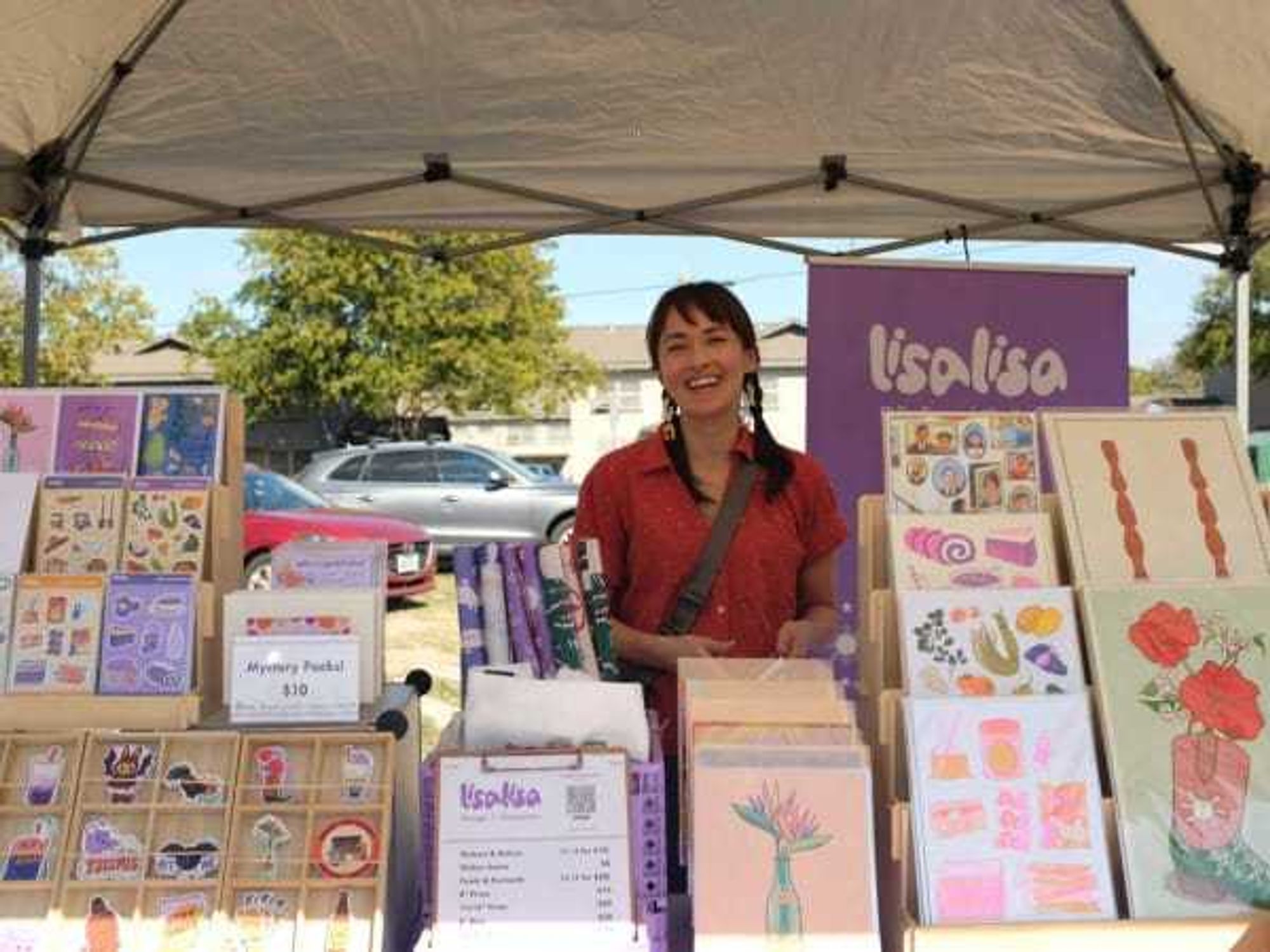Grow Together
Austin's cactus and succulent people gather for fall show at Zilker Botanical Garden

Whether you were a pandemic collector or a pandemic neglecter, odds are there’s room for a few new additions, and your knowledge is always evolving. There will be plenty of adoptable plants, both rare and super accessible, at the Austin Cactus & Succulent Society (ACSS) Fall Show and Sale on September 3 and 4, plus an opportunity to meet and join Austin’s spikiest social club.
The sale invites 10 Texas and New Mexico vendors to the Garden Center at the Zilker Botanical Garden. The little building on top of the hill is tucked away from the highway and Barton Springs Road in the trees, with access to the rest of the grounds for a stroll after scoring some new photosynthesizing friends.
East Austin Succulents always has a big presence at the sale, completely taking over one end of the showroom with showpieces (priced accordingly) as well as tiny, cup-of-coffee priced finds. Rick Van Dyke brings his glazed pottery in earthy tones and organic forms — some look like fossil beds, and others even have eyes and feet. Cactus Data Plants visits from New Mexico with exotic offerings, and A Bugs Home nursery joins from San Antonio.
Many of the stores have little to no online presence apart from ACSS shows, so this annual chance to see their goods is irreplaceable. A $1 raffle every hour will hook visitors up with plants offered by each vendor day-of (so no one knows what’s coming until they get there), and a silent auction, which in the past has included historical books, socks, and a Madagascar palm (Pachypodium lamerei).
ACSS president Sara Sturtevant had no plants when she joined the club, which was founded before she was born, in 1975. She started collecting through the monthly plant raffle to close each meeting, and more seasoned members would give her advice on how to care for her prizes. One of the most valuable pieces of advice she received — advice we all receive over and over, but may never accept — was that even the best growers kill plants sometimes.
“I have a nice little greenhouse now, and I'm very much involved in the community and in plant collecting, but I didn't start that way,” says Sturtevant. “And that's okay. If you have an interest, you should come out.”
Although the club includes nationally-known educators and traders, it also contains part-time hobbyists and, through family memberships, people too young to tell you what a plant is. Sturtevant estimates that the age demographics are evenly split above and below 50, and include active members from high school, college, and deep into retirement. Plants may never have been cooler in the United States than they are now (although the 70s won’t go down without a fight), so membership is booming, and members themselves are what Sturtevant calls a “hip crowd.”
Before the pandemic, roughly 60 people would attend in-person meetings. Those numbers have been slashed in half, but overall membership actually grew to 165. Now some events are available virtually. Regular programming from the past four months has included a workshop focusing on the Haworthia genus (those pointy, fleshy crowns that are sometimes translucent); a presentation on better plant photography; a talk by former Colorado Cactus & Succulent Society president Jackson Burkholder on Sulcorebutia in its native Bolivia; and an exploration of plant and animal life in South Texas by paleontologist and ACSS member Kenneth Bader, who also manages of the Osteological Preparation Lab at UT Austin.
The society’s biggest members-only event is its annual holiday party, which before the pandemic was at a restaurant and has since transitioned to a member’s home. A potluck event in more ways than one, the party turns organically into its own mini market. “People back up their cars and have their own little plant sale, or a trade, or giveaway,” says Sturtevant.
For hands-on, site-specific activities, the group has volunteered to clean up the cactus garden at Zilker, and takes “field trips” to hike and photograph native species (never removing them). They’ve visited Big Bend on past trips, and next up is a smaller private ranch trip. As any social club could hope for, members do connect and hang out independently outside of the group.
Sturtevant considers the plant show a must-see for nostalgic Austinites and visitors. “It's been happening forever at Zilker Botanical Gardens, and it’s kind of a staple in Austin culture. If you want a piece of old Austin, this is it.”
The Austin Cactus & Succulent Society Fall Show and Sale will take place at the Garden Center at Zilker Botanical Gardens on September 3 and 4, from 10 am to 5 pm. It is open to the public. Members ($15 annually, $20 for families including housemates) are invited to free events once a month and receive a newsletter detailing events, society business, and plant thoughts. Sign up at austincactusandsucculentsociety.wildapricot.org.

 Asian vendors gathered for Tayo Na launch part, which celebrated the area's
Asian vendors gathered for Tayo Na launch part, which celebrated the area's  Asian Season ATX celebrates Asian Heritage Month at Austin Beerworks.Photo by Joi Conti Photography
Asian Season ATX celebrates Asian Heritage Month at Austin Beerworks.Photo by Joi Conti Photography